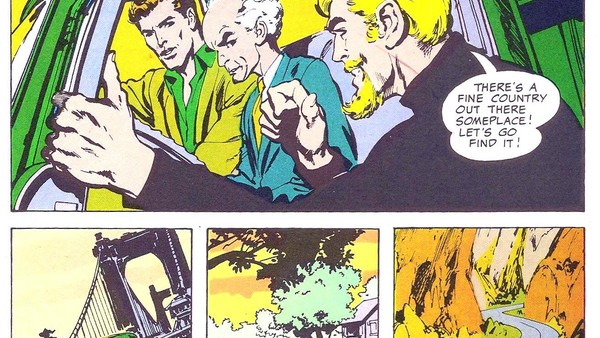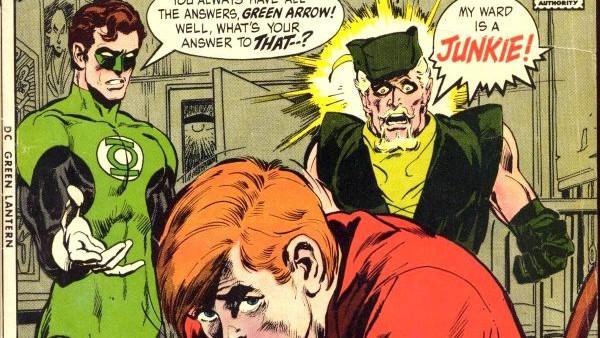Is This The Most Important Comic Of All Time?
3. Hard Travelling Heroes

Green Lantern/Green Arrow is the quintessential seventies comic. What does that mean? Well, it subscribes to the Bronze Age of the medium - a period which saw a notable decline in Silver Age-style funny-books and a return to the darker, pre-Comics Code roots of the superhero genre. Secondly, the book roots itself squarely in the zeitgeist that engulfed the Nixon Presidency; an almost imperceptible malaise had gripped the US, and it manifested in film, TV and - through Green Lantern/Green Arrow - comic books too.
Earlier, I referred to the comic as a 'Fear and Loathing-style road-trip across the United States', and while the protagonists of O'Neil's comic are far more averse to drug use than that of Hunter S. Thompson's gonzo novel, the two works are similar. Thompson's revolves around a journey to Las Vegas where the book's two protagonists, Raoul Duke and Dr. Gonzo, embark on a drug-fuelled bender to find the American Dream. O'Neil's follows the exploits of two heroes who, embarking on a journey to find 'a fine country', end up touching on the malaise of '68 and with it the lingering throws of that decade's counterculture. Their destinations are far different, as are their journeys, but both books share the same motivation: to find an America that's been lost, ostensibly, to a cruel and uncaring milieu.

At times, Green Lantern/Green Arrow reads like a tour through an America in discontent, as the tour guide - Oliver Queen - takes the once oblivious Hal Jordan through all the political touchstones of that decade; drug use, liberation movements, authoritarian politics - all are broached by O'Neil in his attempts to confront what was once considered a silent tragedy, one that the equally silent majority of Nixon's electorate refused to consider.
Yes, there are moments where the book shows its age; in Snowbirds Don't Fly, Arrow's reaction to the revelation that Speedy, his sidekick, has been using drugs feels particularly outdated, but it was genuine. A few months earlier, Marvel had conducted their own 'anti-drug' comic in Spider-Man with a fairly outlandish story about Harry Osborn popping some pills and throwing himself off the nearest rooftop, but with Green Arrow, there was a harsh reality in seeing Roy Harper - the archetypal DC sidekick - succumbing to a heroin addiction. This was also a story both O'Neil and Adams wanted to tell, having witnessed firsthand the effects of drug addiction in their respective neighbourhoods, and you can tell as much reading the actual comic itself - hamfisted moments aside.
Important to note, however, is that while Lantern is the subject of Arrow's ire for much of the series, he too embarks on his own journey, one that would - like the Emerald Archer - change the character forever.